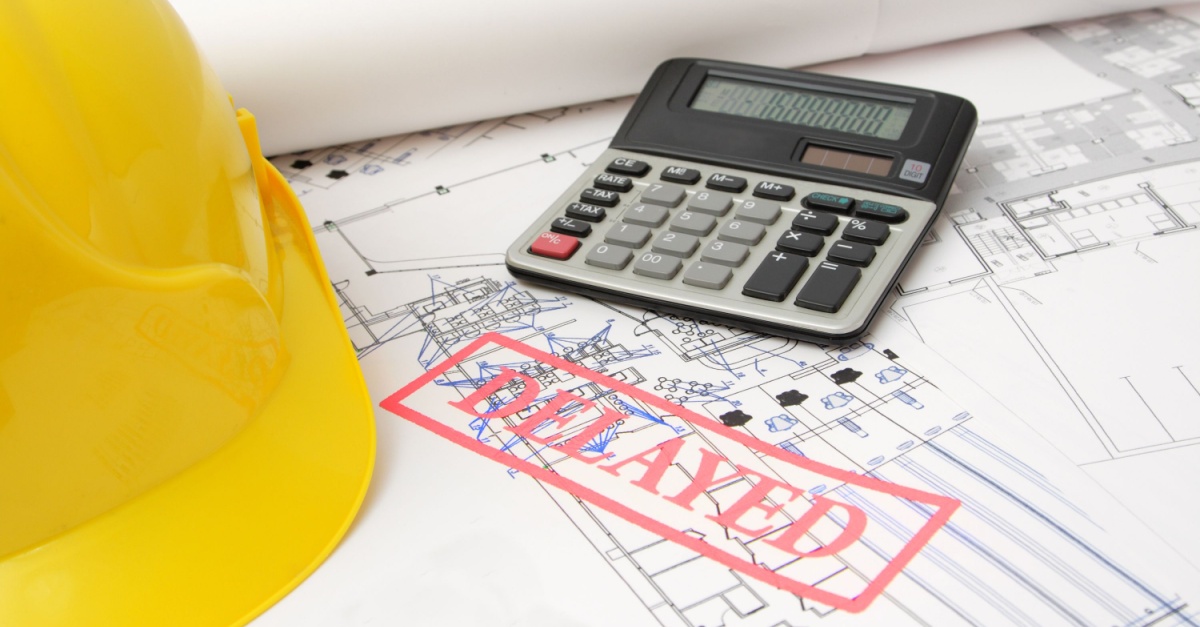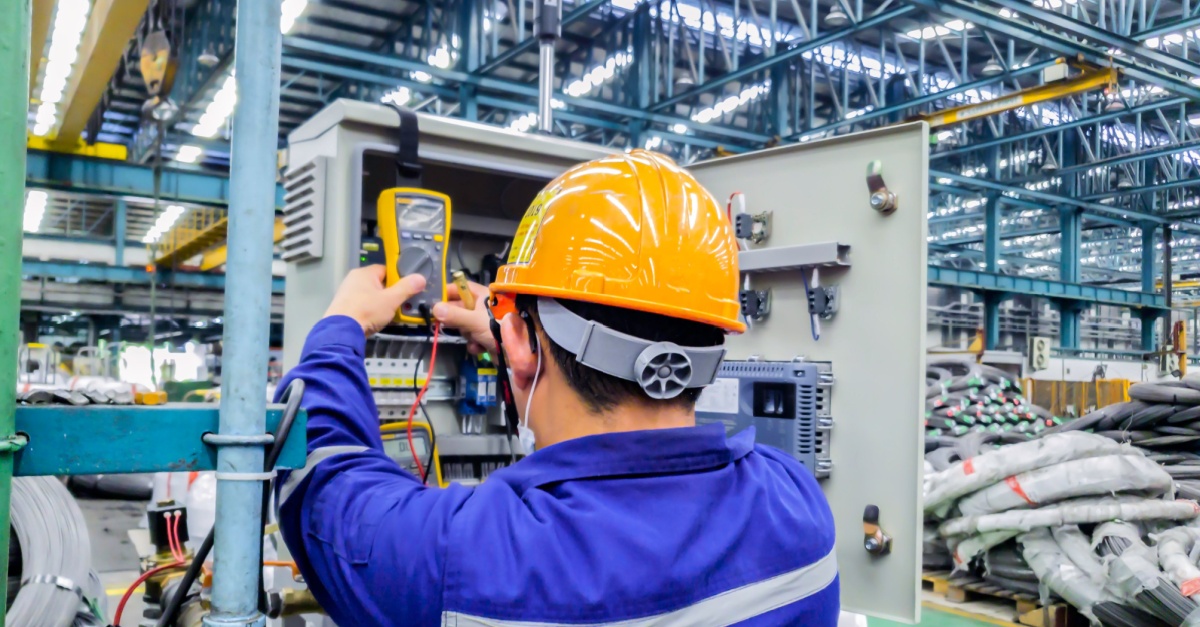
Rolling Out a Refresh? How to Keep Brand Consistency Across Multiple Locations
July 14, 2025
Last Tuesday, your district manager sent you photos from the Denver rollout. The logo? Perfect. The fixtures? Gorgeous. The paint color that was supposed to match corporate’s Midnight Navy? Let’s say it’s giving you more Carolina Blue vibes.
Now multiply that by 47 locations.
That’s the reality of multisite refreshes: Somewhere between the spec sheet and the final walkthrough, brand consistency becomes “brand … close enough.” And that “close enough” mentality is expensive — companies that nail visual consistency across locations see 10-20% higher revenue than those playing brand roulette.
The frustrating part? It’s not usually the big stuff that goes sideways. It’s the thousand small decisions made by contractors who think “similar” equals “same.” The slightly-off tile grout. The pendant lights hung two inches too low. The accent wall that’s 15% too blue.
But here’s what the smartest facilities leaders figured out: The secret isn’t tighter oversight — it’s building a system so bulletproof that even your most creative contractor can’t mess it up.
The five-step playbook that follows will get you there.
Step 1: Capture and Codify Your Brand DNA
Before you touch a single wall, you need to know exactly what “right” looks like. And we’re not talking about that dusty brand manual from 2019 — we mean a forensic-level audit of what’s working in your best locations.
Walk every site with a contractor’s eye. Document the exact SKU numbers for those fixtures that always look perfect, the paint formulas that photograph beautifully under any lighting, and the signage specs that pass ADA compliance without looking like an afterthought. Turn those findings into a digital style guide so detailed that your field crews can’t accidentally order “similar” instead of “same.”
Here’s where it gets smart: Embed 3D renders and AR walk-throughs directly into your specs. When contractors can virtually walk through the finished space before demo day, those “creative interpretations” disappear. Set hard pass/fail thresholds for everything — color variance, lumen levels, fixture placement — then bake those numbers into every contract.
Why the obsessive detail? Because brand consistency starts with knowing exactly what you’re trying to achieve. Companies that nail this upfront documentation slash rework by 12-15% of the total project cost.
Step 2: Centralize Governance and Data Flow
Perfect documentation means nothing when you scatter it across 17 email threads and three different project managers’ laptops. You know how this ends: Your GC works off Tuesday’s drawings while your electrical sub installs fixtures from last week’s “final” spec sheet.
It’s time for a single source of truth. Set up a cloud-based project management hub where every drawing, RFI, submittal, and issue log lives. Give your suppliers, general contractors, and field supers tiered access so everyone’s looking at the same information — no more “sorry, I was working off the old version” conversations.
The real power move? Push live dashboards straight to HQ and job site tablets. When project managers can see schedule slips, budget creep, and punch list items in real time, problems get caught before they become expensive surprises. Your field teams stop playing telephone with critical updates, and you stop getting calls at 9 p.m. about “urgent clarifications.”
Sixty-five percent of construction rework comes from data discrepancies — different teams working off different information. But your standards will stick when everyone’s operating from the same playbook and putting brand consistency first.
Step 3: Standardize Materials and Vendor Bench
Now that everyone’s working from the same information, let’s talk about the materials showing up on-site. Because the fastest way to torpedo brand consistency is letting regional contractors source “equivalent” products from their buddy’s warehouse.
High-performing multilocation brands are 34% more likely to have a dedicated, centralized rollout strategy — and materials standardization is the backbone of that approach. Preapprove your national suppliers for everything: flooring, millwork, LED packages, graphics, the works. No more “this looks pretty close” conversations with local contractors who found a “great deal” on off-brand fixtures.
Bundle your volume buys to lock in pricing and guaranteed lead times across all markets. When refreshing 50+ locations, that bulk purchasing power becomes serious money. Plus, your suppliers can’t play the “supply chain delays” card when they’ve already committed to your timeline.
And as an insurance policy, require vendors to barcode every pallet so your field teams can scan and verify spec compliance on delivery. Wrong shade of gray tile? The scanner catches it before installation, not during your final walkthrough, when fixing it costs 10x more.
Step 4: Pilot, Measure, Iterate
You’ve got your standards locked down and your materials pipeline flowing. Now comes the moment of truth: Does this work in the real world or just in your perfectly organized project management hub?
Test your system where it counts before you roll out to 200 locations. Pick three representative stores — urban, suburban, and rural — and run a full refresh sprint. These aren’t only test cases, they’re your early warning system for everything you didn’t think of.
Track the KPIs that matter most: crew hours, punch-list items, customer disruption minutes, and post-refresh sales lift. That last one is crucial — brand consistency should translate to measurable business results, not just prettier Instagram photos.
Then, within 48 hours of each pilot completion, host a lessons-learned huddle with your entire team. What worked? What didn’t? What made contractors scratch their heads? Feed those insights straight back into your style guide and project hub while the details are still fresh.
Once everything’s all said and done, only green-light the chainwide rollout after your pilot KPIs beat the baseline by agreed margins.
Step 5: Roll Out at Scale with Continuous QA
All right, your pilots worked. Your systems are bulletproof. Time to scale this thing — but here’s where most facilities teams get cocky and try to refresh everything at once.
Don’t.
Roll locations in waves based on what makes sense: geography, revenue impact, and which crews are available when. You don’t want your A-team contractors ping-ponging between coasts while your highest-grossing stores sit half-finished during Black Friday.
Give your field teams mobile apps that turn daily progress photos into your early warning system. The smart ones use AI to spot when things drift off-spec — like when that “navy blue” accent wall starts looking suspiciously purple in natural light or when pendant lights are hung just wrong enough to bug you every time you walk in.
The non-negotiable: weekly walk-throughs by someone uninvolved in the day-to-day work. Fresh eyes catch what tunnel vision misses. When they spot something off-brand, fix it within 48 hours — not “when we get around to it.”
Ultimately, the thing about brand consistency is that 85% of top-performing brands nail their standards across every location. The difference isn’t luck or better contractors — it’s having systems that catch problems before they become permanent fixtures.
How BrandPoint Tackles Brand Consistency Across Your Empire
When done the wrong way, running a multilocation business can feel like coaching a football team where half the offense thinks run, the other half passes, and all end up crashing into each other. You’ve got one location that looks like it stepped out of a design magazine, another that seems stuck in 2003, and a third that somehow interpreted your brand guidelines as “creative suggestions.” We get it — and that’s exactly why our approach at BrandPoint Services zeroes in on this specific pain point.
- We Become Your Single Point of Sanity: Instead of managing a circus of contractors, vendors, and suppliers that all have different interpretations of your brand standards, you get one team that speaks your language. We handle everything from the initial design through the final walkthrough, which means your brand guidelines get executed the same way whether we’re working in Miami or Minneapolis.
- Our Network Thinks Globally, Acts Locally: We’ve spent years building relationships with skilled contractors across North America who actually understand what “brand consistency” means. Each one goes through our vetting process, so you don’t have to wonder if the team in Denver will deliver the same quality as the crew in Detroit — they will because we make sure of it.
- Technology Keeps Everyone Honest: Our project managers don’t just show up with clipboards and good intentions. We use real-time tracking, photo documentation, and intelligent monitoring systems to catch issues before they become expensive problems. Think of it as having eyes on every project without needing to be in 12 places at once.
- We Handle the Whole Picture, Not Just Pieces: From fixture installation to ongoing maintenance, we cover every aspect that affects how your brand shows up in the real world. Your customers won’t notice the difference between locations because there won’t be any differences — your shelving, lighting, and layout will tell the same brand story everywhere.
- We Do What We Promise: Wild concept, right? We’ve been doing this for over 20 years, managing thousands of locations for major brands that demand perfection. Our clients stick with us because we deliver on time, on budget, and on brand — every single time.
The Sweet Spot: On Brand, On Budget, On Time
Multisite refreshes are messy by nature. There will always be one contractor who thinks “close enough” counts or a supplier that ships the wrong fixtures to three states. But when you have systems that catch these problems early — before they multiply across dozens of locations — your brand consistency stops being a hope and starts being a guarantee.
We’ve been living and breathing this exact playbook at BrandPoint Services for over 20 years. While other companies talk about brand consistency, we deliver it through our national contractor network, centralized project management, and those obsessive QA processes that catch problems before they become budget-busting nightmares. Our clients consistently tell us about seamless rollouts with minimal drama — the kind of smooth execution that makes you look like a facilities rock star to your executive team. We handle every fixture, finish, and final clean so you can focus on strategy instead of damage control.
Connect with BrandPoint Services today and put one plan to work for every location.





